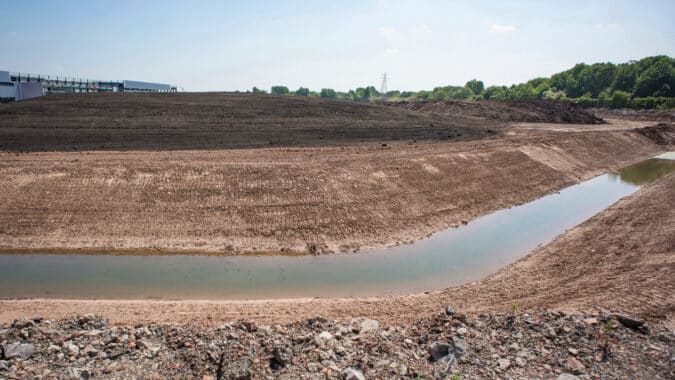Don’t overlook what’s already underground.
That was the message from New Jersey Resources CEO Steve Westhoven during his opening presentation at NJBIA’s 3rd Annual Energy Policy Conference at the Pines Manor in Edison on Tuesday
When it comes to reducing emissions and meeting carbon goals set by the state and NJR, Westhoven said the $17 billion investment in creating and maintaining more than 35,000 miles of underground pipelines, combined with emerging technologies like renewable natural gas and clean hydrogen, can and should play a big part in New Jersey’s efforts.
“This $17 billion is your money,” Westhoven said to the 250 people in attendance. “It has been invested over decades.
“If anyone made a $17 billion investment, you wouldn’t walk away from it. I’d say you have an obligation to keep it.”
Unlike natural gas from fossil fuel, renewable natural gas is derived from methane produced by landfills, sewage treatment plants, and other biological sources. It can be used for anything that natural gas is used for, including powering vehicles and heating homes.
Carbon-free green hydrogen, which is produced through electrolysis of water with electricity generated by low-carbon power sources, can be burned to produce heat or stored in pipelines for later use during times of peak demand.
Westhoven noted that in his last presentation at NJBIA’s energy event two years ago, the federal government was still formulating its plan for how they viewed a clean energy economy.
But things have advanced quickly since then.
The government passed the Bipartisan Infrastructure Law, which included $8.8 billion for clean hydrogen development.
“That’s the most funding for any single pathway forward in the bill,” Westhoven said.
That money sparked 79 clean hydrogen hub proposals around the country to create a natural hydrogen economy. Westhoven said NJR is participating in two of these regional hubs, which will “bring green jobs, economic development and they’re also going to lower emissions along the way.”
Westhoven said he was encouraged that the infrastructure law and the Inflation Reduction Act did not pick a single pathway toward clean energy technology, but an “all of the above approach.”
“We’re going to need wind, we’re going to need a lot more solar, we’re going to need clean fuels going forward, we’re going to need nuclear, we’re going to need more electricity,” Westhoven said.
“But we’re also going to need pipelines to make all of this work.”
Westhoven stressed these importance and reliability of these pipelines, noting they supply energy to 75% of New Jersey homes that rely on gas heating and more than 1,500 critical facilities like emergency services, nursing homes, hospitals, schools and military bases.
Those pipelines, he said, are able to handle an enormous amount of energy capacity. He said on cold days, about five billion cubic feet of gas are moved – or “enough to fit MetLife Stadium 70 times over.”
On a peak summer time day, the pipelines move about 60 gigawatts of electricity through the gas systems.
To build that, Westhoven said, “we would have to build eight times more solar than we have today, eight times more offshore wind that’s projected to be built by 2030 or 47 Oyster Creek-sized nuclear facilities.”
Westhoven said NJR is focused on reducing emissions with its pipelines and newer technologies which will ultimately help everyone at home.
“We need to keep our families and businesses front of mind as we take these steps forward,” he said. “They deserve affordable reliable energy. These are choices that are least disruptive and they deserve to be able to make those choices for themselves.”
To see Westhoven’s full presentation, click here.

